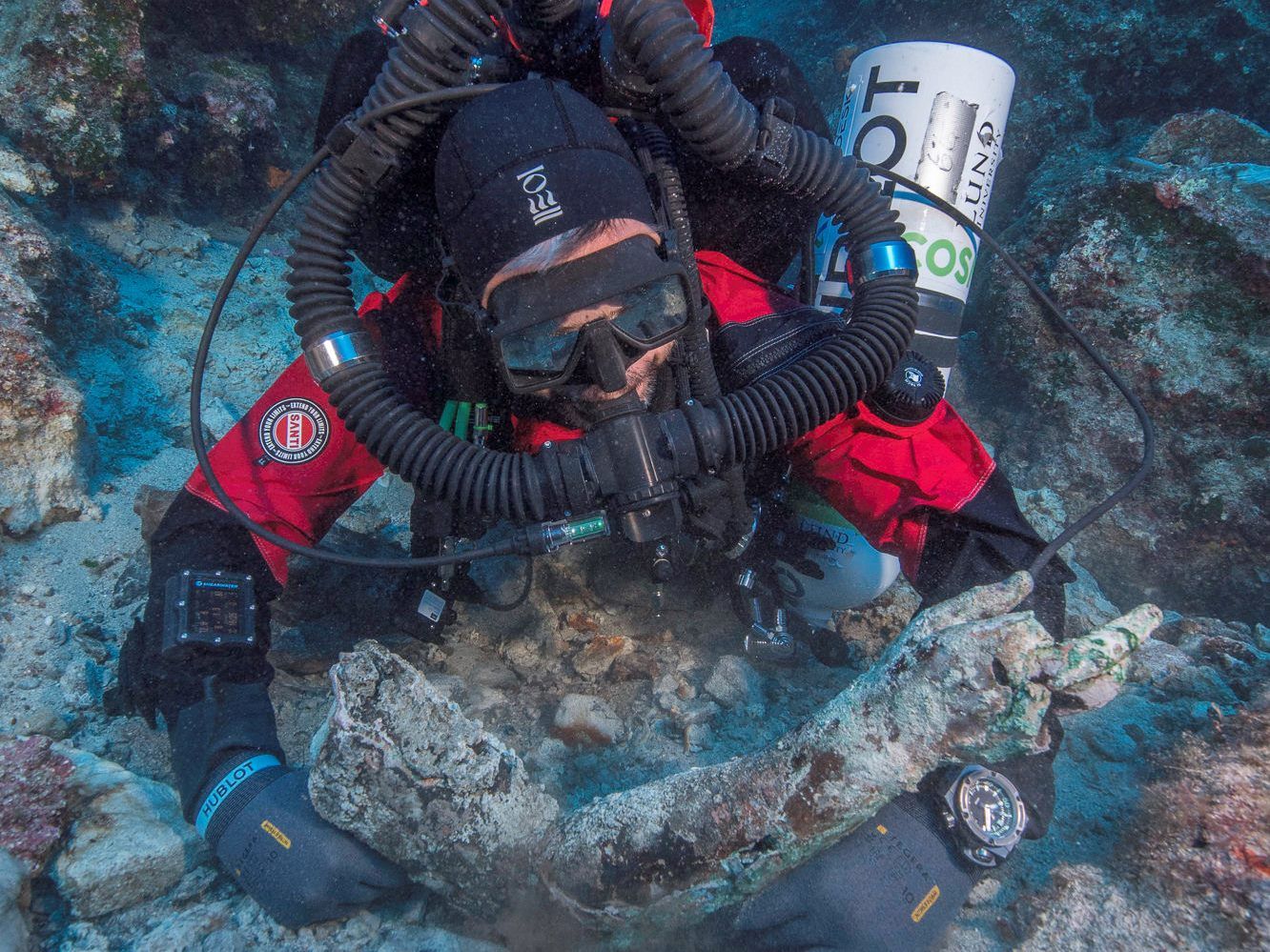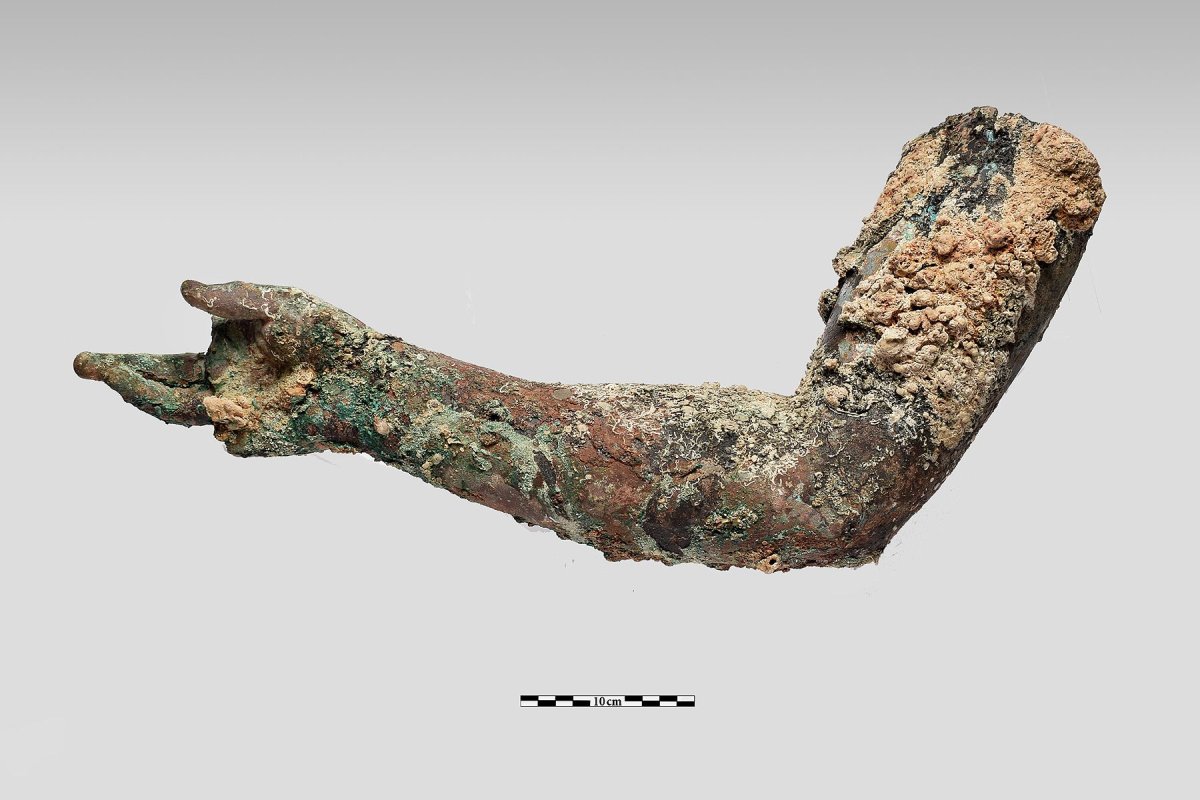
A little over two weeks of diving in September turned up a bronze statue arm, other statue fragments, pottery and ship fragments that have sat at the bottom of the Mediterranean Sea for two millennia, according to an announcement made today by the team of archaeologists and divers in charge of excavating the Antikythera shipwreck.
Bronze statues from Greek antiquity are incredibly rare, and many of those we do have were found in isolation—but that's not the case at this excavation. "What we as archaeologists are most fascinated by is that with Antikythera, we have a situation, a whole archaeological context, that allows us to explore these ancient bronzes in a much more comprehensive way than is usually possible, particularly with these underwater finds," Jens Daehner, an associate curator for ancient sculpture at the Getty Museum in Los Angeles and who is not affiliated with the excavation, told Newsweek.
Last month's finds are due to add to that store of bronzes, according to the new announcement. The largest statue fragment recovered so far is a bronze right arm. But the excavating team also believes that metal-detector readings gathered during the dives promise at least seven more bronze statues, currently still buried under rock and dirt.

Divers—professional and otherwise—have spent more than a century exploring the wreck, which is particularly famous for the Antikythera mechanism it carried, which was an early calculator for astronomical events. But the shipwreck has also been the source of some of the few bronze statues remaining from antiquity.
The statues that have been recovered so far would have been about 300 years old when the ship sank, during the first century B.C. "These are not new statues that were just shipped somewhere after a commission," Daehner says. "They would have been on the ships for other reasons—they were looted or sold off or brought over to Italy, where there was a whole context of collecting that formed during that period."
Bronze statues from Greek antiquity are rare because they were often melted down to reuse the valuable metal they contained. Daehner says that although estimates are difficult to pin down, particularly given the fragmentary nature of what remains, scholars surmise we have pieces of about 200 ancient bronzes.
The team also found a range of other artifacts, including a bronze statue fragment depicting folded cloth, marble statue feet, wood from the actual shipwreck and pieces of clay storage containers called amphorae. One bronze disk hasn't been cleaned yet, but X-rays suggest it sports a picture of a bull.
The excavation is due to continue during the spring of 2018.
Uncommon Knowledge
Newsweek is committed to challenging conventional wisdom and finding connections in the search for common ground.
Newsweek is committed to challenging conventional wisdom and finding connections in the search for common ground.
About the writer
Meghan Bartels is a science journalist based in New York City who covers the science happening on the surface of ... Read more
To read how Newsweek uses AI as a newsroom tool, Click here.








